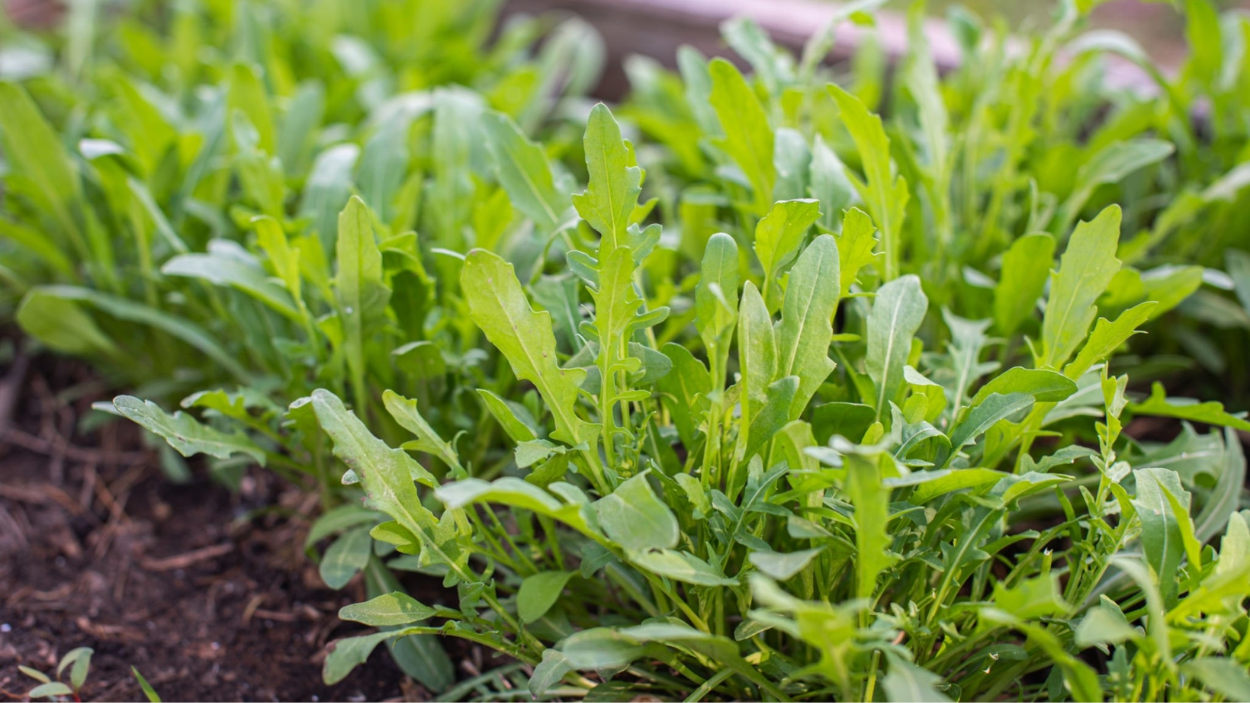Leafy green arugula, commonly referred to as rocket, is a favorite in sandwiches and salads. It tastes somewhat spicy and bitter and is a good source of vitamins and minerals. A terrific addition to any home garden, arugula is very simple to grow in your garden. We will go over arugula planting, growing, and harvesting in this article.
Can Arugula be Grown in Hot Weather?
A cool-season crop, arugula is known to bolt (produce flowers and seeds) quickly in hot weather. It likes cooler temperatures. Arugula can, however, be grown in hot weather if it is done carefully and attentively. The following advice will help you produce arugula in hot weather:
Choose the right variety: Look for arugula types that are expressly marked as heat-tolerant or slow-bolting as these cultivars are more likely to produce a healthy crop in hot conditions.
Provide shade: During the hottest time of day, arugula can benefit from some shade. Growing arugula in an area that receives some shadow will help produce shade, as will utilizing shade cloth or other materials to make shade.
Water frequently: Even in warmer weather, arugula needs regular moisture to thrive. Regularly water your arugula to keep the soil equally moist but not soggy. Mulching can also aid in keeping the soil moist.
How to Plant Arugula
Here are the steps to plant arugula:
Choose a planting site: The optimal conditions for arugula growth are soil that drains well and a position that receives some shade. Pick a location that receives 4-6 hours of direct sunlight each day.
Prepare the soil: The ideal soil for arugula is one that is high in organic matter and has a pH of 6.0 to 7.0. To increase soil fertility and texture, till the ground to a depth of 6 to 8 inches and amend it with compost or aged manure.
Plant the seeds: Arugula seeds should be sown directly into the ground, 1-2 inches apart, and 1/4 inch deep. To achieve proper seed-to-soil contact, lightly cover the seeds with soil and tamp them down.
Water the seeds: Following planting, water the seeds and keep the soil equally moist until the seeds germinate, which takes 7 to 14 days. Overwatering should be avoided as it might cause seed rot and other issues.
Thin the seedlings: When the seedlings are between two and three inches tall, thin them to a distance of six to eight inches. The remaining plants will be able to mature and grow appropriately as a result.
Fertilize the plants: Being a heavy feeder, arugula gains from routine fertilizer. Throughout the growing season, apply a balanced fertilizer, such as a 10-10-10 or 5-10-10, every three to four weeks.
Harvest the leaves: As soon as the arugula plants' outer leaves are large enough to be used, harvest them; the inner leaves should be allowed to develop further. This will encourage ongoing leaf development and stop the plants from bolting.
Ways to Preserve Vegetables Arugula
Arugula is a leafy green vegetable that is best eaten when it is still fresh because it quickly wilts and loses flavor after harvest. Arugula can be preserved in a few different methods to increase its shelf life. Arugula is often preserved by being kept in the refrigerator. The arugula leaves should be cleaned and dried with paper towels. To store arugula for a long time, it can also be dried.
The arugula leaves should be cleaned and dried with paper towels. The leaves should be spread out in a single layer on a baking sheet and placed in the lowest oven setting (around 150–170°F). Keep the oven door slightly ajar to let moisture out. The leaves should be dried for 3–4 hours, or until they are brittle and dry. For up to 6–8 months, keep the dried arugula in an airtight container in a cold, dry location. The dried arugula can be added to teas and infusions or used as a flavoring.
How Often Should I Fertilize my Arugula Plants?
Fast-growing arugula needs fertilizer frequently to create tasty, healthy leaves. You can incorporate a slow-release fertilizer into the soil before planting arugula to gradually supply nutrients. You can start fertilizing your arugula with a balanced, water-soluble fertilizer three to four weeks after planting. You may check whether your arugula is receiving the nutrients it needs by conducting periodic soil tests.
Final Thought
It's simple to cultivate arugula in your yard, which is a tasty and healthy leafy green. You can easily plant, develop, and harvest arugula by using these straightforward tips and tactics. Keep in mind to pick a spot with some shade, put the seeds directly into the ground, and water your plants regularly. All season long, you may savor locally grown, fresh arugula with a little bit of care.




